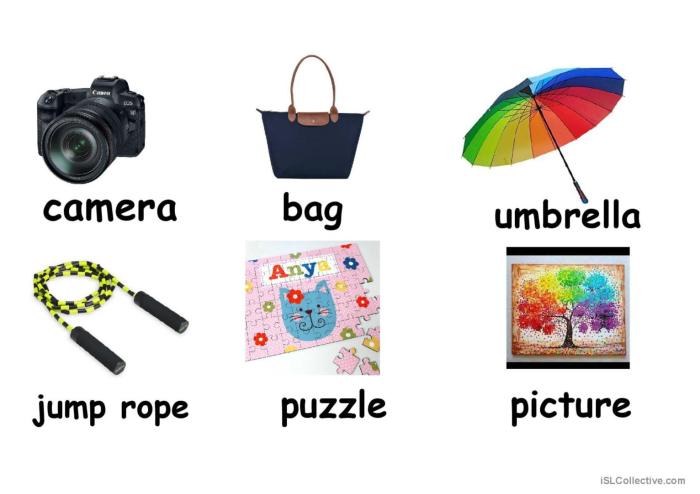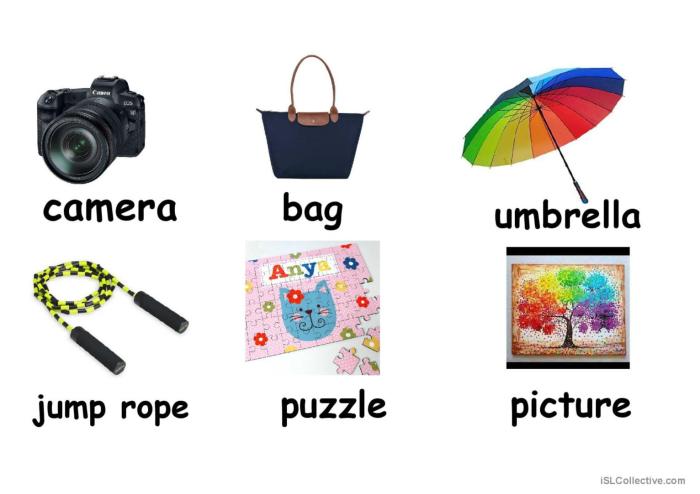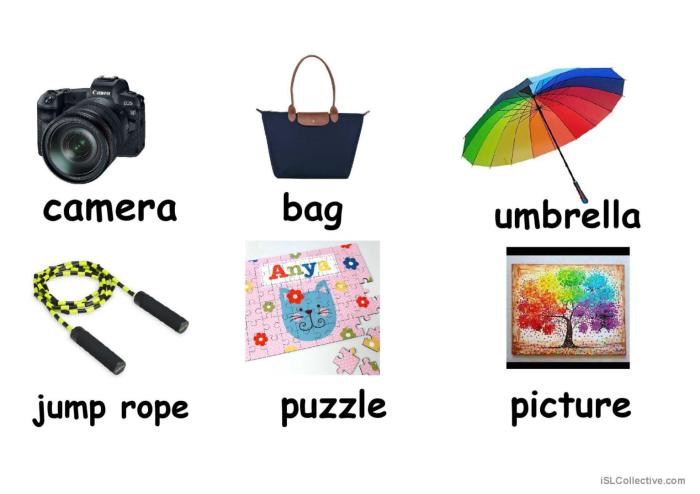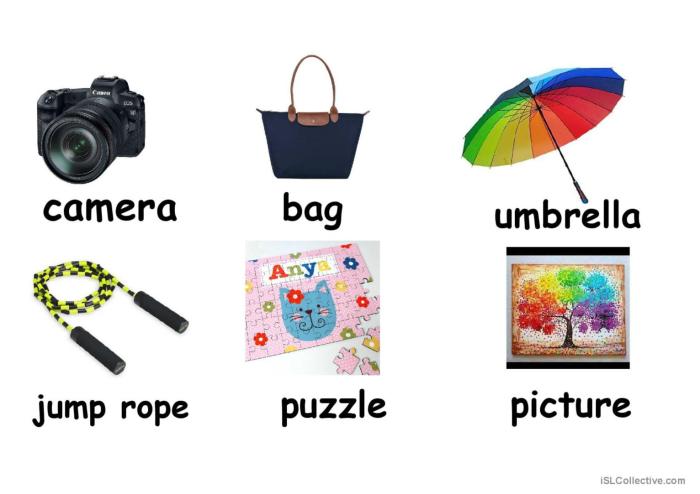Things to know before traveling to Indianapolis: Discover the vibrant heart of Indiana, from its rich history to its exciting modern attractions. This comprehensive guide will equip you with essential information on transportation, accommodation, dining, activities, events, budgeting, safety, and local culture. Prepare for an unforgettable trip to this Midwestern gem!
Indianapolis, a city with a captivating blend of history and modernity, offers something for every traveler. Whether you’re interested in exploring its museums, enjoying its diverse culinary scene, or experiencing its bustling festivals, this guide will help you plan a trip tailored to your interests. Get ready to delve into the details!
Introduction to Indianapolis
Indianapolis, the capital of Indiana, is a vibrant midwestern city with a rich history, a thriving economy, and a diverse cultural scene. Known for its sporting events, particularly its iconic Indianapolis Motor Speedway, the city also boasts impressive museums, theaters, and a growing culinary scene. Beyond its famous attractions, Indianapolis offers a surprising mix of urban amenities and suburban charm, making it an appealing destination for both tourists and residents.Indianapolis’s unique appeal lies in its blend of modern progress and historical significance.
From its early days as a frontier settlement to its present-day status as a major American city, Indianapolis has experienced constant evolution. This evolution is reflected in its architecture, its cultural institutions, and its approach to urban planning. This post will delve into the city’s history, key attractions, and a comparison with other major US cities.
Overview of Indianapolis
Indianapolis is a major city in the Midwestern United States, located in central Indiana. It’s known for its central location in the US and its role as a hub for transportation, commerce, and culture. The city’s infrastructure is well-developed, supporting various industries and facilitating easy access to other parts of the country. Indianapolis has experienced significant growth in recent decades, becoming a dynamic and attractive place to live, work, and visit.
History of Indianapolis
Indianapolis’s history is a fascinating narrative of growth and transformation. Founded in 1821, the city’s early development was closely tied to the expansion of the railroad system. The arrival of the railroad brought significant economic opportunities, attracting people and businesses from across the country. The city’s reputation as a transportation hub continued to evolve, ultimately shaping its identity and infrastructure.
Crucially, the Indianapolis Motor Speedway, built in 1909, solidified the city’s place in American sporting history. This pivotal moment solidified its status as a significant player in the national sporting landscape.
Comparison to Other Major US Cities
| Characteristic | Indianapolis | Chicago | New York City | Los Angeles |
|---|---|---|---|---|
| Population (2023 est.) | 863,000 | 9,500,000 | 8,800,000 | 12,800,000 |
| Economy (2022 GDP) | $130 Billion | $935 Billion | $1.9 Trillion | $820 Billion |
| Cultural Offerings | Museums (e.g., Eiteljorg Museum, Indiana State Museum), theaters, sports venues, diverse neighborhoods | World-class museums, vibrant theater scene, diverse culinary scene, numerous cultural districts | Global center of arts, culture, and entertainment; countless museums, theaters, and performing arts venues | Hollywood, world-class museums, music venues, and a diverse cultural scene |
This table provides a basic comparison of Indianapolis to other major US cities based on population, economy, and cultural offerings. Note that these figures represent estimated values and might vary depending on the source. The diverse and robust cultural scene of Indianapolis, though smaller than larger cities, reflects its own unique appeal.
Key Attractions
The city boasts iconic attractions like the Indianapolis Motor Speedway, a renowned racing venue hosting the Indianapolis 500. The White River State Park offers expansive green spaces and recreational opportunities, complementing the urban landscape. Furthermore, the city’s museums, including the Eiteljorg Museum and the Indiana State Museum, provide insights into the region’s history and culture. These attractions, coupled with the city’s overall atmosphere, create a compelling draw for visitors.
Transportation and Logistics
Indianapolis offers a variety of transportation options to suit different needs and budgets. From a robust public transit system to readily available ride-sharing services and ample parking, navigating the city is generally straightforward. Understanding the nuances of each mode will help you plan your trip efficiently.
Public Transportation
Indianapolis’ public transportation system, operated by IndyGo, provides essential connectivity throughout the city. It’s a vital resource for residents and visitors alike.IndyGo’s extensive bus network covers nearly all neighborhoods. Routes are designed to connect key destinations, including downtown, major employment centers, and residential areas. Real-time bus tracking apps and online schedules allow you to plan your journeys effectively.
Accessibility features are present on many buses and stops, ensuring ease of use for individuals with disabilities. The system is a practical way to traverse the city without a personal vehicle. The light rail line extends along a specific corridor, offering a faster and more direct route between key locations. Stations are situated at strategic points to facilitate transfers and connections with bus routes.
The rail line is a convenient option for longer distances.
Driving
Driving in Indianapolis is a common mode of transport. The city’s street layout generally follows a grid pattern, making navigation relatively easy. However, traffic congestion, particularly during peak hours, can impact travel times. Utilizing real-time traffic apps can help you adjust your route and anticipate delays.Parking options vary depending on the location. Downtown areas typically have structured parking garages, while other neighborhoods may offer street parking.
Parking fees and availability can fluctuate. Knowing the parking regulations and limitations beforehand is beneficial.
Ride-Sharing Services
Ride-sharing services, like Uber and Lyft, are readily available in Indianapolis. They offer convenient transportation options, particularly for shorter trips or when public transportation isn’t an ideal choice. The convenience of ride-sharing is offset by potential price fluctuations based on demand and time of day. Knowing the potential price variability is crucial when planning a trip using these services.
Transportation Comparison
| Transportation Option | Cost (estimated) | Estimated Travel Time |
|---|---|---|
| IndyGo Bus | $1-$2 per ride | Variable, dependent on route and traffic |
| IndyGo Light Rail | $1.75 per ride | Generally faster than buses for longer distances |
| Car | Variable, dependent on fuel and parking | Variable, dependent on traffic and route |
| Ride-sharing (Uber/Lyft) | Variable, dependent on distance and demand | Variable, dependent on distance and traffic |
Accommodation Options: Things To Know Before Traveling To Indianapolis
Indianapolis offers a diverse range of accommodation options to suit every budget and travel style. From budget-friendly hostels to luxurious hotels, the city caters to solo travelers, couples, and families alike. Understanding the different areas and types of lodging can make choosing the perfect place to stay a breeze.Finding the right place to rest your head is crucial for a positive travel experience.
Different neighborhoods in Indianapolis offer varying vibes and amenities, so knowing the area’s character is helpful when choosing your accommodation. This section will detail the various lodging options, highlighting pros and cons of different types, and recommending areas based on traveler preferences.
Budget-Friendly Options
Hostels are a popular and cost-effective way to stay in Indianapolis. They provide a social environment for solo travelers and budget-conscious groups. Several hostels offer private rooms and dorms, catering to different preferences and budgets. These accommodations are usually located in central areas, providing easy access to attractions. The shared spaces and social events often provide opportunities to connect with other travelers and locals.
Consider hostels if you value social interaction and want to save money.
Mid-Range Hotels
Mid-range hotels offer a balance of comfort, convenience, and value. These hotels often have more spacious rooms than hostels, with amenities like complimentary breakfast and free Wi-Fi. Locations are typically strategic, close to major attractions or transportation hubs. A wide variety of mid-range hotels are available, offering a variety of styles and themes.
Luxury Hotels
Indianapolis boasts a number of luxurious hotels, providing an elevated travel experience. These hotels often feature high-end amenities such as spa services, gourmet restaurants, and exclusive access to certain events. They are often located in upscale areas, providing a premium experience and an array of services. For travelers prioritizing comfort and a premium experience, luxury hotels are an excellent choice.
Alternative Accommodations
Beyond traditional hotels, Indianapolis offers alternative accommodations, catering to unique preferences. Airbnb apartments and vacation rentals provide more space and privacy than standard hotel rooms, and are often a better value than similar hotel options for groups or families. These accommodations also provide a more local feel and offer flexibility. If you want a more home-like experience or prefer more space and amenities, consider this option.
Best Areas for Lodging
The best area for lodging depends on the traveler’s needs. Downtown Indianapolis is a good choice for those interested in the city’s vibrant nightlife, restaurants, and attractions. For families, the areas surrounding the White River State Park provide a blend of outdoor activities and city amenities. The upscale neighborhoods around the Broad Ripple area offer a more relaxed atmosphere and access to fine dining.
So, you’re planning a trip to Indianapolis? Good choice! Before you book that flight, it’s smart to consider the weather. For example, if you’re looking for a more pleasant time to visit, checking out the best times to visit Savannah Georgia might be a good idea best times to visit savannah georgia. Once you know the ideal time for warm sunshine, you can plan your Indianapolis trip accordingly.
Ultimately, knowing the best time to go is key for any trip, no matter where you’re headed.
Comparison of Popular Hotels and Alternative Accommodations
| Accommodation Type | Price Range | Amenities ||—|—|—|| Budget-Friendly Hostels | $25-$50/night | Shared bathrooms, common areas, social events || Mid-Range Hotels | $75-$150/night | Complimentary breakfast, Wi-Fi, fitness center || Luxury Hotels | $150+$/night | Spa, gourmet dining, concierge services || Airbnb/Vacation Rentals | Variable | Kitchen, living space, potentially more space than hotels |This table provides a quick overview of different accommodation types, price ranges, and amenities.
Consider your budget and travel style when making your selection. Remember to research specific hotels and compare amenities before booking.
Food and Drink Scene
Indianapolis boasts a vibrant and diverse culinary scene, reflecting the city’s multicultural population and growing foodie culture. From classic American fare to international delights, there’s something for every palate. Local farmers’ markets and independent restaurants offer fresh, seasonal ingredients, highlighting the best of Indiana’s agricultural bounty. The city is constantly evolving, with new restaurants and food experiences popping up regularly.Indianapolis offers a surprising variety of culinary options, from cozy cafes serving breakfast pastries to upscale dining experiences.
The city’s food scene caters to a broad range of tastes and budgets. Whether you’re seeking a quick bite or a memorable fine-dining experience, Indianapolis has something to satisfy your hunger.
Restaurants by Cuisine
Indianapolis offers a diverse range of restaurants, catering to various tastes and budgets. This section highlights some of the city’s best establishments, categorized by cuisine type.
- American Cuisine: Many classic American restaurants are found throughout Indianapolis, providing familiar comfort food favorites. Local favorites often feature fresh, locally sourced ingredients, showcasing Indiana’s agricultural bounty. The atmosphere ranges from casual family-friendly diners to more upscale establishments. Examples include The 400 Club, a popular spot for classic American fare, or The Brickyard, a lively restaurant with a focus on traditional dishes.
- International Cuisine: Indianapolis has a significant number of restaurants offering international cuisine, reflecting the city’s diverse population. This includes everything from authentic Mexican and Indian food to Vietnamese pho and Japanese sushi. Many of these restaurants are located in neighborhoods with strong international communities, providing authentic tastes of various cultures.
- Fine Dining: For a more upscale dining experience, Indianapolis offers several excellent fine-dining restaurants. These establishments often feature creative menus, high-quality ingredients, and a sophisticated ambiance. Examples include restaurants like The Golden Lamb, known for its innovative dishes and attention to detail.
Food Markets and Attractions
Indianapolis hosts several farmers’ markets and food-related attractions that offer unique experiences.
- Farmers’ Markets: Indianapolis has a few popular farmers’ markets that showcase local produce, baked goods, and artisan crafts. These markets are great places to sample fresh, seasonal products and support local farmers. The locations and schedules vary, so checking local listings is recommended.
- Food Halls: Food halls are becoming increasingly popular in Indianapolis, offering a variety of cuisines under one roof. These are often casual spaces, ideal for trying a variety of food items from different vendors.
Popular Restaurants
This table provides a glimpse into some popular restaurants in Indianapolis, categorized by cuisine and price range.
| Restaurant | Cuisine | Price Range |
|---|---|---|
| The Golden Lamb | Fine Dining | $$$ |
| The 400 Club | American | $$ |
| [Restaurant Name] | [Cuisine] | [Price Range] |
| [Restaurant Name] | [Cuisine] | [Price Range] |
Activities and Attractions
Indianapolis boasts a vibrant mix of attractions for all ages, from world-class museums to sprawling parks and historical landmarks. Whether you’re seeking cultural immersion, family fun, or unique experiences, Indianapolis has something to offer every visitor. The city’s commitment to preserving its past while embracing its future is evident in the variety of attractions available.Indianapolis’s attractions cater to a broad spectrum of interests.
From the renowned Indianapolis Motor Speedway to the historic White River State Park, the city offers a diverse range of activities that cater to every taste and interest. The cultural tapestry woven into the city’s fabric is reflected in its many museums, showcasing everything from art and science to history and nature.
Major Tourist Attractions
Indianapolis offers a rich tapestry of attractions, spanning museums, historical sites, and parks. These destinations provide a window into the city’s past, present, and future, showcasing its cultural heritage and modern advancements. These destinations provide a glimpse into the city’s history and the spirit of its people.
- Indianapolis Motor Speedway: The legendary home of the Indianapolis 500, the iconic race, attracts thousands annually. Witnessing the speed and determination of the drivers, as well as the excitement and pageantry of the event, offers a truly unique experience.
- White River State Park: This sprawling park offers various activities, from walking and biking trails to the iconic Canal Walk, featuring views of the city and water features. The park is a central hub for recreational activities and public gatherings.
- Eiteljorg Museum: This museum showcases the rich cultural heritage of the Americas, including indigenous cultures and artifacts. The collection provides a comprehensive overview of Native American history and art, along with a focus on the historical narratives and the rich artistry of the region.
Family-Friendly Activities
Families will find a plethora of engaging activities. The city’s commitment to family-friendly experiences is evident in its parks, playgrounds, and museums that offer interactive displays for children.
- Children’s Museum of Indianapolis: A renowned destination for children, offering interactive exhibits that foster learning and creativity. Children are encouraged to explore, experiment, and learn through hands-on activities, making it a memorable experience.
- The Indiana State Museum: A treasure trove of Indiana’s history and culture, the museum offers engaging exhibits for all ages. The museum provides a detailed exploration of the state’s history, from its indigenous inhabitants to its present-day inhabitants.
Unique and Off-the-Beaten-Path Experiences
Beyond the major attractions, Indianapolis offers unique experiences that provide a deeper understanding of the city. These destinations provide a glimpse into the city’s unique characteristics, often overlooked by the average tourist.
- Indianapolis Canal Walk: Enjoy a leisurely stroll along the historic canal, offering picturesque views of the city and a chance to experience the urban landscape in a different way. The canal walk offers a unique perspective of the city’s urban landscape.
- The Indiana Historical Society: Explore the rich history of the state through a variety of exhibits and resources. The exhibits provide a glimpse into the history of the state, and are often designed to spark curiosity and further investigation.
Top Attractions with Estimated Visit Times
| Attraction | Description | Estimated Visit Time (hours) |
|---|---|---|
| Indianapolis Motor Speedway | Home of the Indianapolis 500, featuring museum exhibits, and the track itself. | 2-4 |
| White River State Park | Extensive park with walking trails, the Canal Walk, and various amenities. | 2-5 |
| Eiteljorg Museum | Showcase of Native American and other cultures from the Americas. | 2-3 |
| Children’s Museum of Indianapolis | Interactive exhibits perfect for families with children of all ages. | 3-5 |
| Indiana State Museum | Explore Indiana’s history and culture through exhibits and artifacts. | 2-4 |
Events and Festivals

Indianapolis boasts a vibrant calendar of events throughout the year, catering to diverse interests. From thrilling sporting spectacles to captivating arts and cultural celebrations, there’s something for everyone. These events not only enrich the city’s cultural tapestry but also contribute significantly to its economic vitality.Planning your trip around specific events can enhance your Indianapolis experience, transforming it from a simple visit into a truly memorable adventure.
Understanding the timing of festivals and celebrations allows you to immerse yourself in the local spirit and enjoy the unique atmosphere that each event brings.
Major Annual Events and Festivals
This section highlights some of the most prominent annual events that occur in Indianapolis. These events attract significant attendance and contribute to the city’s vibrant atmosphere.
- Indianapolis 500: Held annually in May, this legendary auto race is a cornerstone of Indianapolis’s sporting calendar. Spectators from around the world converge to witness this thrilling spectacle of speed and competition. It’s a fantastic opportunity to experience the energy and excitement of a major sporting event, and to soak in the unique atmosphere of the city during race week.
It’s considered a major highlight and is an iconic event, attracting a huge number of spectators.
- Indiana State Fair: Held annually in late summer or early fall. This sprawling fairgrounds hosts livestock shows, agricultural competitions, and various amusement park rides. The fair features a variety of food vendors, and offers a unique opportunity to experience the state’s agricultural heritage and diverse culinary scene. It’s a family-friendly event with a fun-filled atmosphere.
- Indianapolis Motor Speedway’s Concert Series: This series brings a range of popular artists to the track for unforgettable musical experiences. These concerts offer a unique opportunity to experience top-tier entertainment in a unique setting.
- Indy’s Arts and Culture Events: Indianapolis offers numerous art exhibits, music festivals, and theatre productions throughout the year. These events showcase the city’s rich artistic heritage and attract a broad range of attendees.
Upcoming Events (Next 6 Months)
This calendar provides a glimpse into the exciting events happening in Indianapolis in the coming months. This is a snapshot of the events scheduled for the next six months, offering a preview of what’s in store.
So, you’re planning a trip to Indianapolis? Good choice! Before you go, check out the amazing accommodations like the culver city los angeles the shay hotel for inspiration on finding the perfect stay. Knowing the best time to visit and the local transportation options will make your trip even smoother. Remember to research the city’s events and attractions to maximize your experience.
Indianapolis has tons to offer!
| Date | Event | Description |
|---|---|---|
| June 10-11 | Indiana State Fair | A sprawling fairground featuring livestock shows, agricultural competitions, amusement park rides, and food vendors. |
| July 15-16 | Indy’s Jazz Festival | A celebration of jazz music featuring various performances and events. |
| August 26 | Indy’s Arts and Crafts Fair | An annual event showcasing local artists and artisans. |
| September 10 | Indianapolis Fall Festival | An autumnal celebration with a variety of entertainment and food vendors. |
| October 28-30 | Indy’s Halloween Festival | A celebration of Halloween with various activities, parades, and costume contests. |
Best Times to Visit Based on Events
To maximize your enjoyment, consider aligning your visit with specific events. The Indy 500 is a thrilling spectacle, while the State Fair offers a unique glimpse into Indiana’s agricultural heritage. The specific time you choose will depend on what you’re looking for. For example, the summer months, with events like the State Fair, offer a unique blend of family fun and cultural immersion.
So, you’re planning a trip to Indianapolis? Great choice! Before you go, make sure you check out the local events calendar – you might even snag a fantastic deal on a cruise like the Holland America glacier volcanoes cruise to Hawaii and Alaska , which is totally different but a cool experience. Also, don’t forget to book accommodations in advance, especially if you’re traveling during peak season.
Budgeting and Costs
Planning your trip to Indianapolis involves understanding the financial aspects. Knowing the average costs of accommodation, food, transportation, and activities is crucial for creating a realistic budget. This section details estimated expenses for a 3-day trip, offering insights into potential variations and strategies for saving money.
Accommodation Costs
Indianapolis offers a range of accommodation options, from budget-friendly hotels to luxurious resorts. Expect to find hotels in the downtown area ranging from $100 to $300 per night for a standard room. Motels and budget-friendly options outside the downtown core may be priced lower, typically between $80 and $150 per night. Airbnb rentals provide more space and often include kitchen facilities, offering potential savings on meals, and can vary significantly based on location and amenities, typically ranging from $100 to $300 per night.
Food and Drink Costs
Indianapolis boasts a diverse culinary scene. A casual lunch at a local restaurant will typically cost between $15 and $30 per person. Dinner, depending on the restaurant and menu choices, will generally fall between $25 and $50 per person. Dining at a more upscale establishment can easily exceed $50. Consider grabbing quick and affordable snacks from local eateries or grocery stores for cost-effective options.
Transportation Costs
Indianapolis’ public transportation system is convenient, with a range of options like buses and light rail. A single ride on public transportation will cost approximately $2.50. Purchasing a day pass or a multi-day pass can offer savings, potentially costing around $10 for a day pass. Consider using ride-sharing services or taxis for convenience, but these will cost more, with prices varying depending on the distance and time of day.
Driving a personal car will require parking fees, with typical costs of $10 to $20 per day in downtown areas.
Activity Costs
Indianapolis offers a wealth of attractions, from museums to parks. Admission fees to museums and attractions can vary significantly. For example, the Indianapolis Motor Speedway Museum will cost $25-30 per adult, while the Eiteljorg Museum of American Indians and Western Art could range between $20-25 per adult. Free activities, such as visiting parks or exploring downtown, are also available.
Entry fees to specific events may vary depending on the event’s popularity and the time of year.
Estimated Costs for a 3-Day Trip
| Category | Low Estimate | Mid Estimate | High Estimate |
|---|---|---|---|
| Accommodation (3 nights) | $240 | $450 | $900 |
| Food (3 days) | $150 | $250 | $400 |
| Transportation | $30 | $60 | $100 |
| Activities (3-4) | $60 | $150 | $240 |
| Total | $480 | $920 | $1690 |
This table provides a general guideline. Actual costs can fluctuate based on your choices and preferences. For example, if you opt for more expensive restaurants or activities, the total cost will naturally increase.
Saving Money Tips
- Look for discounts and deals on accommodation, attractions, and activities. Websites like Groupon or local tourism boards often provide coupons and special offers.
- Consider staying outside the downtown area for more affordable accommodation options.
- Take advantage of free activities, such as exploring parks and walking tours.
- Pack snacks and drinks to avoid expensive restaurant purchases.
- Look for happy hour deals or lunch specials for affordable meals.
These tips can significantly help reduce the overall cost of your trip to Indianapolis.
Safety and Security
Indianapolis is a generally safe city for tourists. However, like any urban area, it’s important to take precautions and be aware of your surroundings, especially at night or in less populated areas. This section provides valuable insights into staying safe during your visit.Traveling to a new city can feel daunting, but understanding the safety measures in place can ease your mind and ensure a pleasant experience.
By staying vigilant and aware of your surroundings, you can minimize potential risks and fully enjoy all that Indianapolis has to offer.
Crime Rate Considerations
Crime rates vary across cities, and Indianapolis, like other large metropolitan areas, experiences fluctuations in crime statistics. Understanding general trends can help travelers make informed decisions about where to explore and what precautions to take. Notably, crime rates are not evenly distributed, and specific locations or neighborhoods may have varying levels of safety.
General Safety Measures
Staying aware of your surroundings and practicing common-sense safety measures are crucial for any traveler. Avoid walking alone in poorly lit areas at night, and if possible, travel with companions. Be cautious of your belongings, especially in crowded or public spaces. Avoid displaying large sums of cash or expensive jewelry.
Safety Recommendations
- Be aware of your surroundings at all times, especially in public spaces and areas with lower pedestrian traffic. Pay attention to your surroundings and observe potential risks, such as suspicious individuals or unattended objects.
- Keep your valuables secure. Don’t flaunt expensive items, and store your belongings in secure locations, such as hotel safes or well-lit areas.
- Use reputable transportation services. When using ride-sharing services or taxis, confirm the driver’s identity and ensure the vehicle is legitimate.
- Report any suspicious activity to the authorities immediately. If you witness or experience anything that makes you feel uneasy, don’t hesitate to contact local law enforcement or security personnel.
- Plan your route and itinerary in advance, especially if visiting less-traveled areas or at night. Familiarize yourself with the layout of the city to enhance your safety.
- Stay connected. Ensure you have a fully charged phone or other communication device and share your itinerary with a trusted contact.
Culture and Customs
Indianapolis boasts a vibrant and diverse cultural landscape, reflecting its rich history and the contributions of its many residents. From its roots as a bustling Midwest city to its modern-day status as a hub for innovation and arts, Indianapolis’ cultural identity is constantly evolving and expanding. Understanding the city’s traditions and customs can enhance your travel experience, allowing you to connect with the local community on a deeper level.The city’s multicultural heritage is evident in its neighborhoods, each with its unique flavor and character.
This blend of traditions creates a unique atmosphere that’s both welcoming and exciting for visitors. Understanding the nuances of local customs can help ensure a respectful and enjoyable visit.
Diverse Population and Traditions
Indianapolis is a melting pot of cultures, with residents hailing from various backgrounds and ethnicities. This diversity is reflected in the city’s cuisine, music, art, and celebrations. The city’s neighborhoods showcase this diversity, each with its own unique charm and character. This range of cultures creates a vibrant and exciting environment for visitors.
Local Customs and Etiquette
While Indianapolis is generally welcoming to visitors, certain customs and etiquette practices are helpful to be aware of. Being mindful of these practices can foster positive interactions with locals. A friendly smile and a willingness to learn are key elements in navigating any new environment.
- Respect for Personal Space: Like many American cities, personal space is valued. Maintaining a comfortable distance during conversations and interactions is important.
- Dining Etiquette: When dining in restaurants, be mindful of table manners. Using utensils appropriately and being considerate of others around you are essential. Tipping is customary in restaurants.
- Dress Code: Dress comfortably, but be mindful of appropriate attire for specific venues. Dress codes vary depending on the location.
History and Evolution of the City’s Cultural Scene
Indianapolis’ cultural scene has evolved significantly over time. From its early days as a burgeoning industrial center to its present status as a major cultural hub, the city has seen continuous growth and development. The city’s museums, theaters, and art galleries are testaments to this evolution.
- Early Days: The city’s early cultural scene was shaped by its industrial past, with an emphasis on practical arts and entertainment.
- Mid-20th Century: The mid-20th century saw the rise of cultural institutions, including museums and theaters, solidifying Indianapolis’ position as a cultural center.
- Contemporary Era: Today, the city boasts a dynamic cultural landscape with a diverse range of activities, from contemporary art exhibitions to live music performances.
Cultural Experiences in Indianapolis
Indianapolis offers a wide array of cultural experiences for visitors. From historical sites to contemporary art displays, the city has something to offer everyone. Visiting various neighborhoods provides an insight into the city’s diverse population.
- Museums: Indianapolis is home to numerous museums, including the Indiana State Museum, the Eiteljorg Museum, and the Indianapolis Museum of Art, which showcase a diverse range of art and history.
- Theaters: The city’s theaters provide opportunities to experience live performances, from Broadway shows to local productions.
- Neighborhood Exploration: Exploring the city’s diverse neighborhoods, such as the trendy Broad Ripple or the historic White River State Park, offers insights into local cultures and traditions.
Practical Information
Getting ready for your Indianapolis adventure involves more than just choosing the perfect hotel or restaurant. Understanding the local environment, from currency to communication, ensures a smooth and enjoyable trip. This section covers the practical details needed for a hassle-free experience.
Currency and Language
The official currency of the United States, including Indianapolis, is the US Dollar (USD). Credit cards are widely accepted, but having some cash on hand for smaller purchases or less-developed areas is always a good idea. English is the primary language spoken, although you may encounter some individuals who speak other languages, particularly in more diverse areas.
Travel Documents and Visas
If you are a US citizen, you likely won’t need a visa to enter the country. However, if you are from another country, checking the specific visa requirements for the US and for Indiana is crucial before your trip. The US State Department website is a reliable source for this information. Ensure your passport is valid for at least six months beyond your intended stay.
Communication Options
Staying connected is essential. Indianapolis boasts excellent Wi-Fi availability in most public places, including cafes, hotels, and tourist attractions. For reliable local communication, purchasing a local SIM card can provide inexpensive calls and data. Many international phone providers offer roaming options, but local SIM cards often provide better value. Consider the data needs for your trip.
Emergency and Tourist Information, Things to know before traveling to indianapolis
Staying informed is crucial for any trip. Here’s a table with important contact numbers:
| Category | Number |
|---|---|
| Emergency Services (Police, Fire, Ambulance) | 911 |
| Indianapolis Tourism Information | (317) 327-3400 |
These numbers are vital for any unexpected situation, from minor mishaps to serious emergencies. Familiarize yourself with these numbers before your trip.
Closing Notes

In conclusion, Indianapolis offers a unique and memorable travel experience. From its convenient transportation options to its diverse accommodation choices and vibrant food scene, this guide provides a comprehensive overview to ensure a smooth and enjoyable trip. Embrace the city’s rich culture, and create lasting memories during your Indianapolis adventure.










